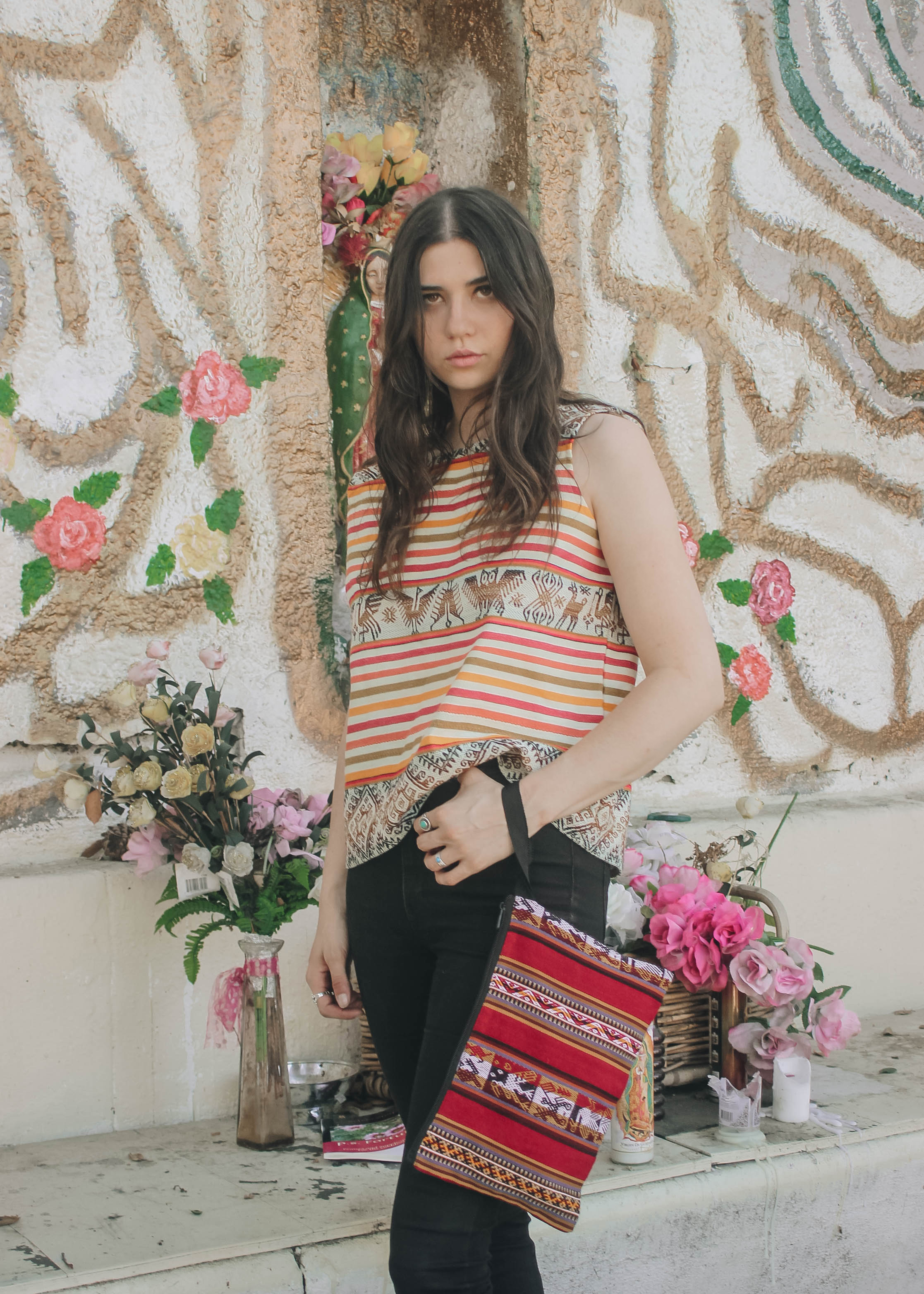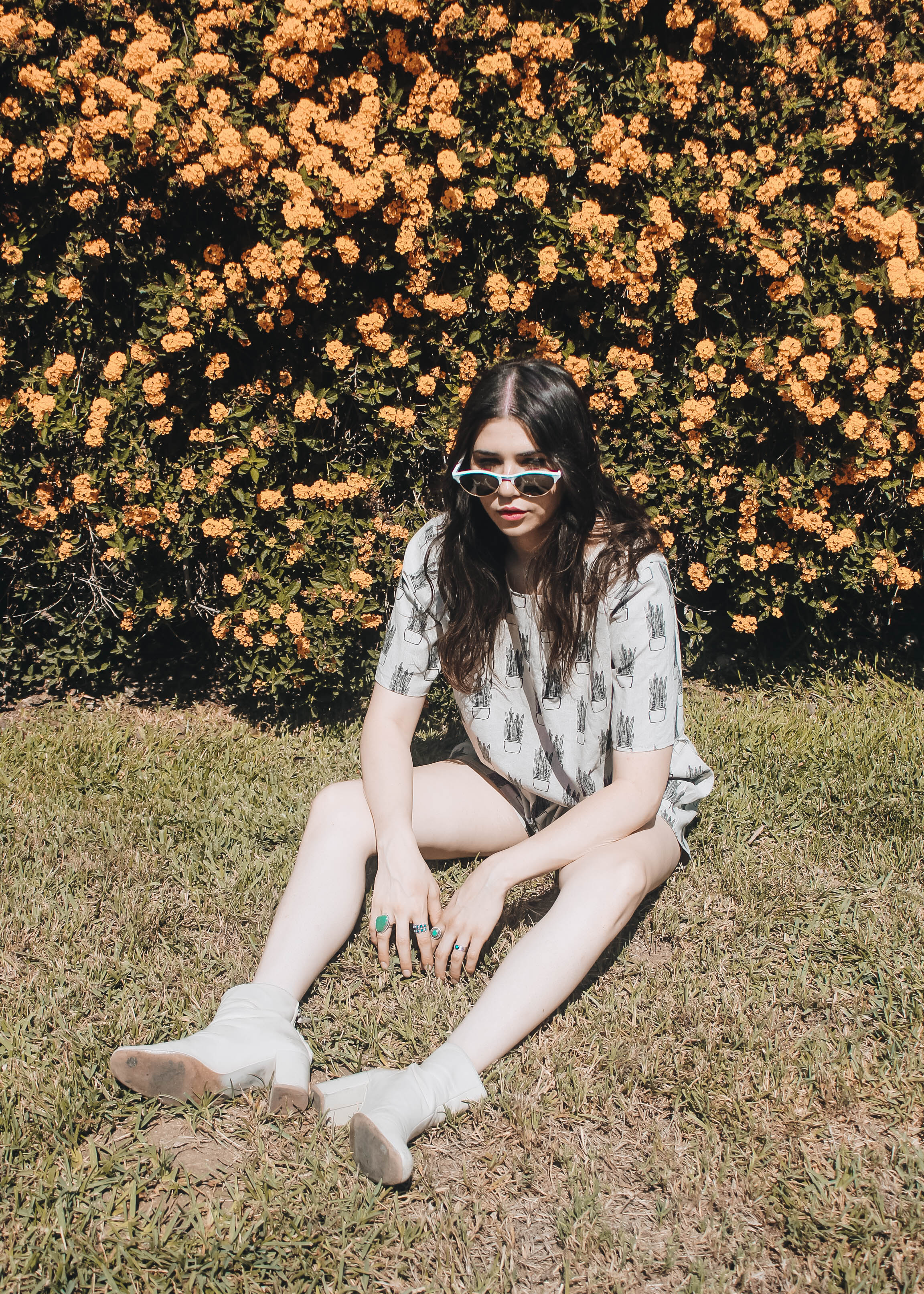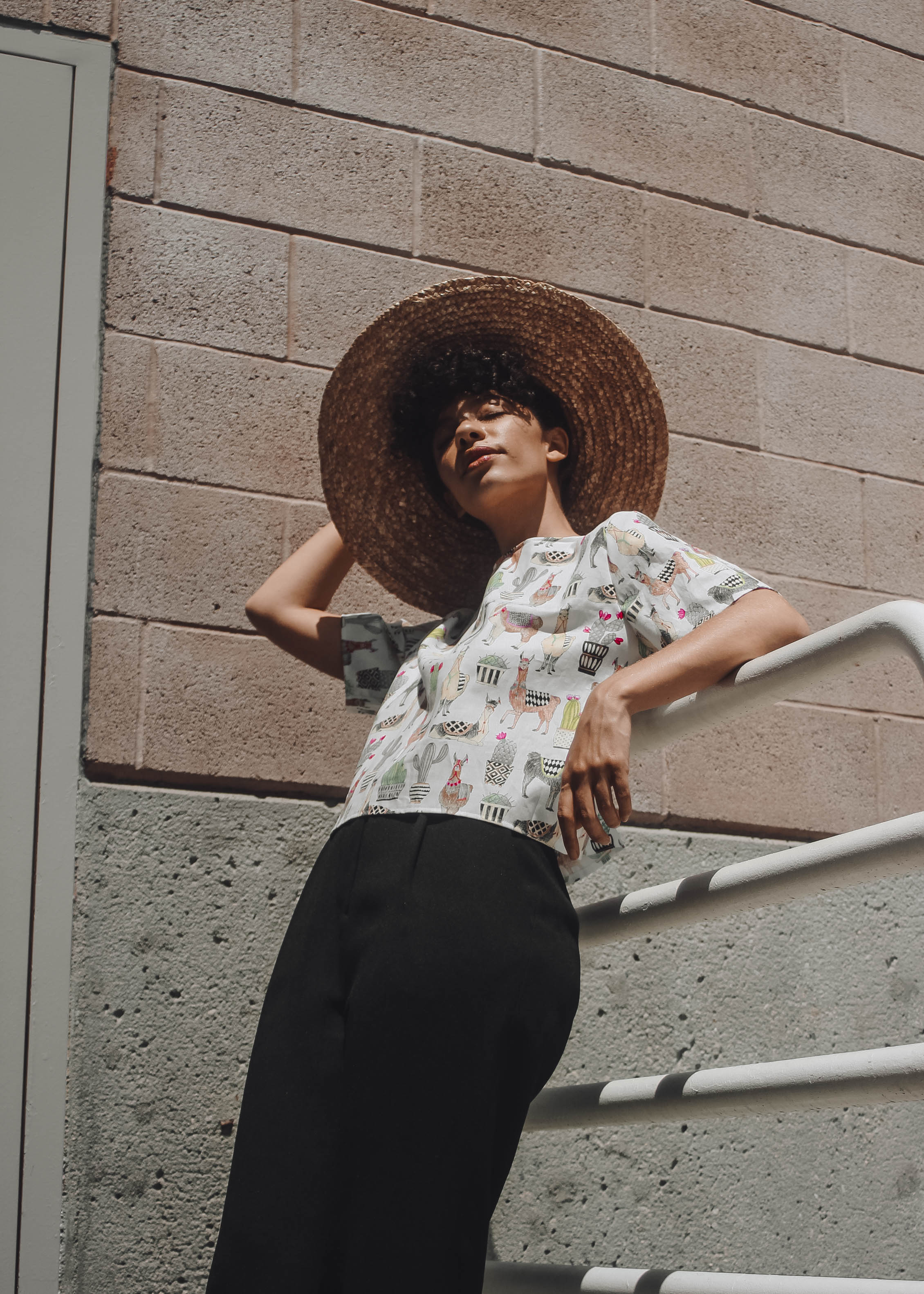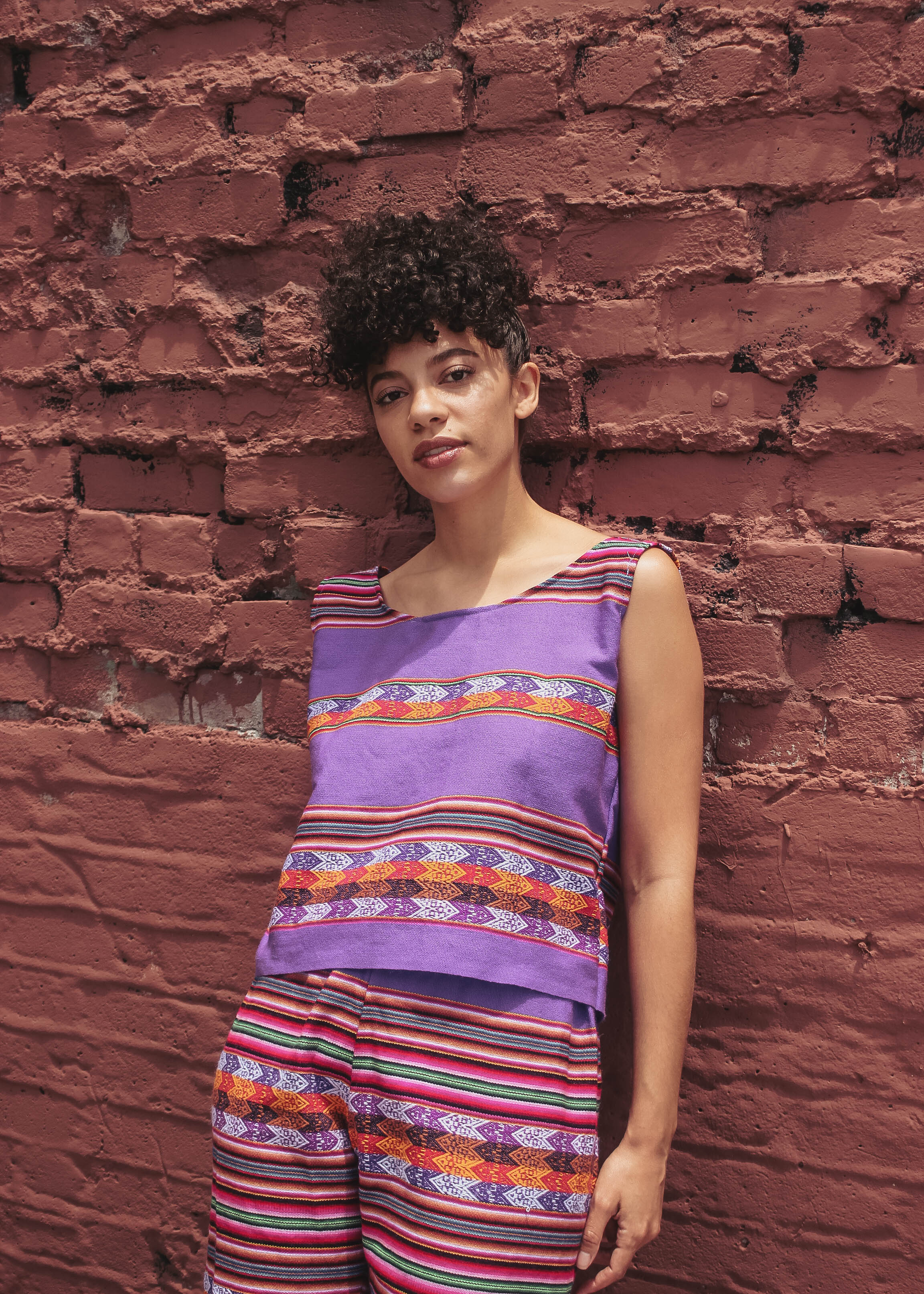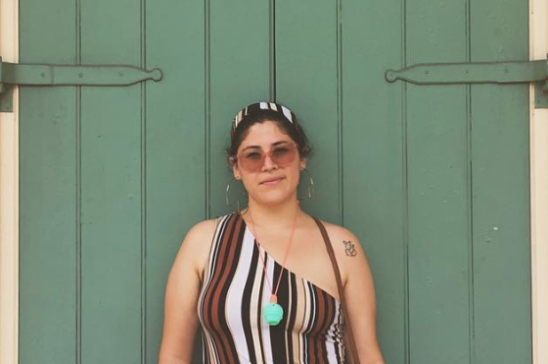MEET: VANESSA ACOSTA
TGM: Where did you get the name, Wasi For your clothing brand?
V: I recently just changed the name actually. Since the brand’s been picking up a lot more lately I realized I need a name that I really connect with. It used to be “paragon dessert”, which is a name a friend and I came up with years ago. That name carried over from a shop we had on etsy where we would sell our own vintage clothing. We had the domain & all the accounts already so when I decided to start my brand, I just thought, this is all set up so that’s easy! But now that people are starting to feature me & are interested in the history of the name, I wanted it to really mean something. Wasi, is actually a word my grandfather translated to me the last time I saw him. It means family and home in Quechua which is a dialect people speak in Bolivia, Peru and Chile. My grandfather and my grandmother on my mom’s speak it. My grandfather passed, so my grandmother is the only one left in our family who can speak it. While it’s a dying language this is my way of keeping the language alive.
TGM: How do you hope women feel when they wear your clothing?
V: I want them to feel good. I’ve talked to a lot of women that have told me that this is never something they would pick up in a store but once they try it on, they tell me it feels amazing. They’ve told me they feel lighter, bright & happy. I think that has a lot to do with how I make the clothing. When I work, I have to be in a good place mentally. Since every piece is being hand made by me, with these two hands, I really believe that the energy I put in while I am making these garments can be felt when I send them out to people. I want them to get a garment that was made with good energy. I always think back to the film Like Water For Chocolate and how the main character transferred her emotions in her cooking. I feel the same way with my clothing. I don’t sew if I’m not in a good place. I want my pieces to feel good and they do! I also think because the prints are lively & colorful, people just feel fun when they wear them.
TGM: When did you start in fashion?
V: I went to school for fashion at FIDM in Los Angeles. After that, I worked for corporate companies in design for about 10 years before I decided to go off on my own. Throughout those 10 years, I didn’t really explore my own aesthetic. I was always designing for other people and other companies. It was my parents that actually pushed me. They kept begging me to use Bolivian textiles and do cholita outfits. When I was younger I was like, no, no, no, I want to figure it out on my own and find my own aesthetic. I then got a bunch of textiles from Bolivia and didn’t really do anything with them. It wasn’t until 2016 that I decided to make something out of them. That time is also when I started to do my own photography. I’d make stuff on a whim, just for my own liking and then photograph it. It picked up very quickly from there and I realized that other people liked my stuff, not just me. I found a balance of not just doing cholita outfits. I take the shapes and textiles and found a way to make them my own. I seek inspiration from my culture but then modify the fits & silhouettes to be my own. I’m now in my second year of running my own business. I began September 2016 and by December 2016 I was able to quit my corporate job and go off on my own. It’s definitely tough but I love what I’m doing!
TGM: How would you describe a “cholita” outfit?
V: Cholitas wear these high bowler hats. There’s definitely a balancing trick to them. I always wonder, how do they bend over without the hats tipping over? They don’t pin them or anything. The OG cholitas know how to balance a 7-inch bowler hat with grace. They also wear huge heavy skirts. At festivals they try to pile on as many skirts as possible for a certain dance that they do. Sometimes they’ll wear up to 30 skirts. It looks huge & ruffled. It’s the classic indigenous cholita look. No matter the socio-economic background, cholitas all wear the same outfit. The only difference is how good the fabric is. The hat & the skirt are the two staples.
TGM: Are all your textiles from Bolivia?
V: The majority, yes but a few are locally sourced. I try to stick to textiles that speak to and compliment the Bolivian textiles. I use Alexander Henry textiles, which are the Frida prints everyone loves and I use a cactus textile. These are the textiles I can order throughout the year. What I make with the Bolivian textiles are really limited and a little more expensive since it takes travelling and sourcing. I make sure to pay the people that are making these textiles a fair price. I don’t bargain with them. I pay the prices they want them at. People sometimes say, “your stuff is so expensive!” but it’s because of all that goes into it & what you’re getting is a one of a kind piece.
TGM: What do you look for in a textile?
V: Colors, funky prints. I’m definitely a print person. I don’t make a lot of stuff that’s solid. I am starting to go in that direction for the girls that tend to dress in just colors but I am generally really drawn to prints. I am really colorful myself and a lot of girls have told me they love all the colorful stuff but they are more of a black wardrobe kind of person. I want to get people out of that and introduce them to a tad bit of color so my textiles have to have color and a print.
TGM: What drove you to fashion in the first place, even before FIDM?
V: I’ve always been into fashion. I’ve been an oil painter since I was about seven years old. My parents put me in this art academy and noticed that everything I would paint or draw was a woman wearing a dress that I’d imagined. In middle school I started sketching my own clothes. Originally I wanted to be an artist, not a fashion designer, but my parents convinced me otherwise. They told me only a few make it in art and there wasn’t much money in it. That’s when I decided I wanted to pursue fashion design. By high school I knew that’s what I wanted to do and I began to learn to sew. Since then, fashion design has been my number one love. I guess I’ve always known this is what I wanted and I feel lucky that I stuck with it and haven’t steered too far from that. I’m one of those rare weirdos that have known what they wanted to do since they were a kid.
TGM: Do you still paint or explore other mediums of art?
V: I wish I still painted! When I think back, I used to paint so much but I don’t have the time for it now. I do photography and when I’m not making stuff for a customer I like to make clothes for myself that aren’t going to be sold. When I make stuff for customers or events, it’s work. I love my work but sometimes I just want to make something crazy that no one is going to wear but me! It’s a hobby of mine. What’s tough is sometimes when I make things for myself and post it, people start to ask when I’m going to start selling it and I don’t really want to. These are one of a kind pieces I make for myself. It’s an extension of my work, but they are purely for fun and my own satisfaction.
TGM: If you could go back and talk to your high school self that had just started sewing, what advice would you give her?
V: Be smart with your money! I see where I spend my money now and I put so much value in things back in the day that I don’t value now. When I first started to sew, I should have been making my own outfits not buying 20 items at the H&M sale rack. I could have made that stuff. I also definitely had my fun years in my twenties going out, but now I look back and realized I put SO much money into just getting drunk every weekend when I could have been saving that money or traveling with it. Now all the money I make goes to my business & traveling. I’m a very minimalist person and wish I would have been more wise with my money when I was younger.
TGM: How does being a woman of color influence your business?
V: People definitely know it’s a business owned by a Brown woman. I am very vocal about it. When I first started my brand people would immediately assume it was White-owned and attack me about cultural appropriation and I had to explain myself. I have to be vocal about it for that reason. People see a lot of heavily cultured South American brands and are super defensive about it. It’s understandable. There are so many White-owned businesses that do that so it’s a tough market. I realized I need to be vocal about who I am. I’ve posted myself more lately. I don’t love to post myself but people need to a see a face and the person making these clothes.
I also feel like I need to be vocal about the cost. People say my clothes are expensive all the time and I have to be like, “hey, I am a woman of color and I’m sourcing my stuff from indigenous people in another country. The prices are high because I am being paid a fair wage and the people I am buying these textiles from are being paid fairly.” Some people will also come for me and say that I am making things for women of color but women of color can’t afford this stuff. That’s problematic in itself, assuming that all women of color are in a low income bracket! I know plenty of women of color who can afford this stuff and will pay for it, especially as it’s being made by another woman of color they want to support. I do understand that some people can’t afford it, which is why I started a partnership with Afterpay that allows people to do payment plans for my clothing. I still get paid in full but the payments are through a third -party that allows for payment installations. I listen to my customers & I want them to feel good without denting their wallets.
You can catch Vanessa at one of her pop up shops! For more info, visit her website, wasiclothing.com or on Instagram @wasiclothing
All photos shared by Vanessa



